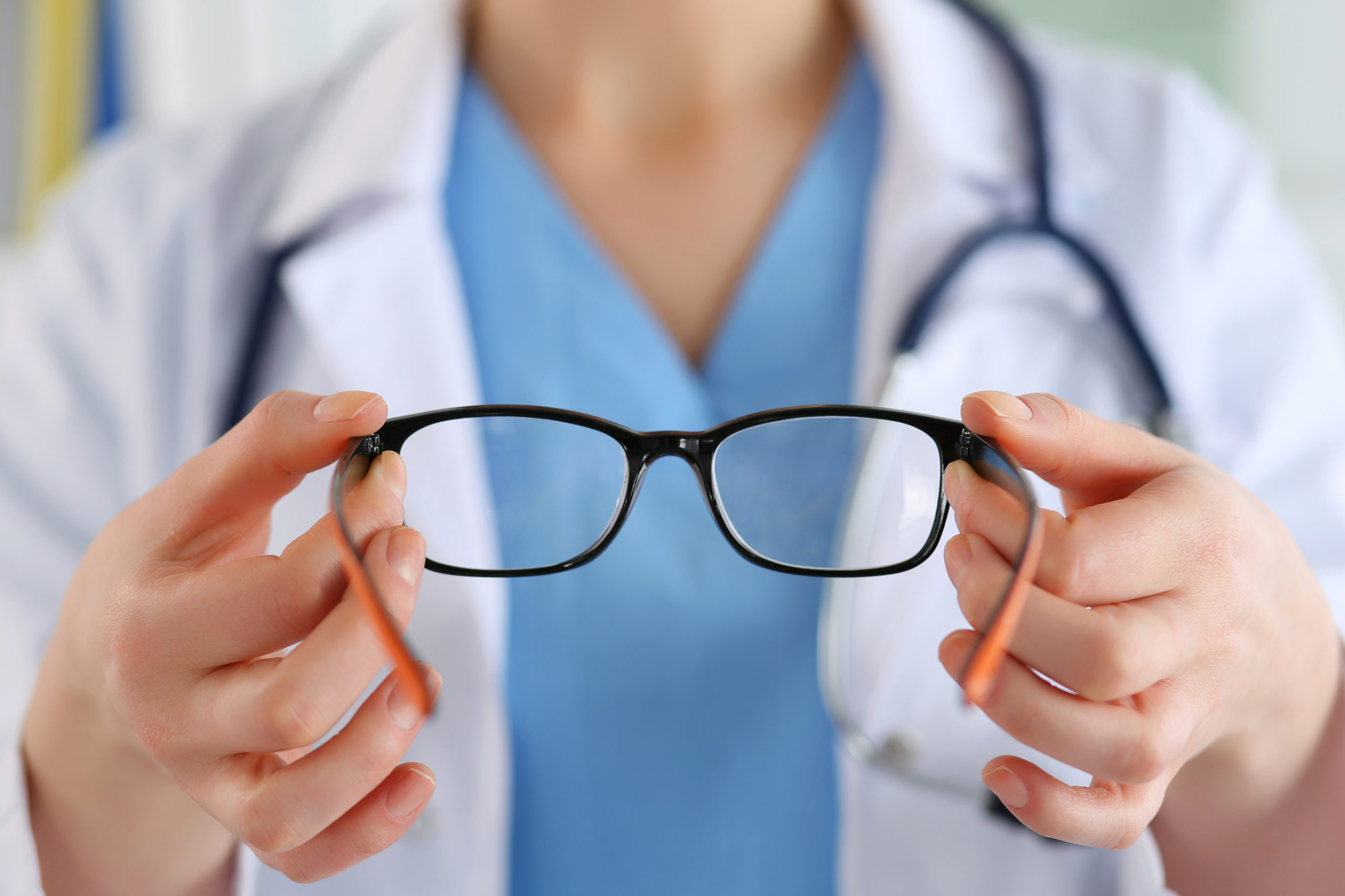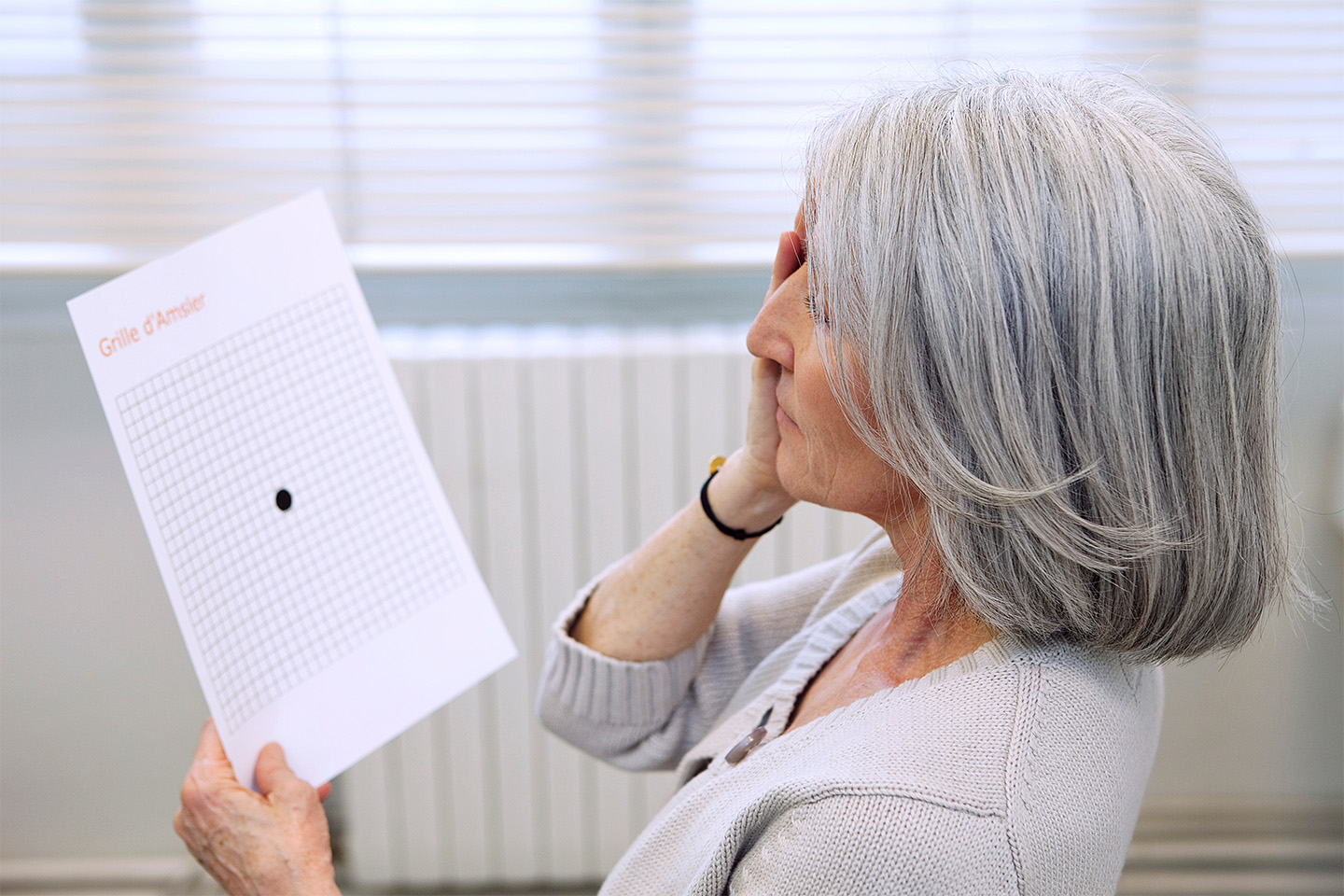Not Sure If You Need Glasses? Here’s How to Tell.

Even if you haven’t needed glasses before, watch for these symptoms to ensure that your vision changes don’t go undiagnosed.
In adults, vision changes can creep up slowly. It may be months or years before you realize you can’t read the street signs that your friend can, or until you notice that you’re holding a menu further away from your face. Even if you’ve had perfect vision all your life, your eyes can change, and you may find yourself one of 150 million Americans who need some form of vision correction.
If you’re not sure if you need glasses, start to look out for symptoms like blurred or fuzzy vision, double vision, or the appearance of “halos” around objects. You may feel headaches or tired eyes, or find night driving difficult. Symptoms may point you toward one of these three common refractive errors:
Myopia
Myopia, or nearsightedness, is by far the most common refractive error for people under 40, and its ubiquity is growing. Up from just a quarter of the population a few decades ago, now a full 40% of the U.S. population is nearsighted.
The problem typically begins in childhood, and studies suggest that more focusing on up-close objects, along with increased time indoors away from sunlight, can cause developmental issues with the eyes. If you have myopia, the eyeball is too long, and the light rays fall in front of the retina, meaning that you are able to read a book or use a computer without difficulty, but you may squint, strain, or grow fatigued when looking at a distance.
Hyperopia
Hyperopia, or farsightedness, means that you can see at a distance more clearly than up close. Only 5-10% of people in the U.S. have this condition. In moderate cases, you may not notice the issue for a while, but eventually, you may realize that you have trouble reading or using a computer. You may experience headaches or eye strain.
Children are sometimes born hyperopic, with a too-short eyeball that means the light focuses behind the retina. Most children outgrow this over time, but in other cases, hyperopia can cause blurring at all distances, or double vision.
Presbyopia
Unlike hyperopia, presbyopia is typically related to age and happens to nearly everyone beginning in their mid-40’s. At this point, the lens of the eye begins to lose elasticity, and you’ll find that you cannot see nearby objects as clearly as you once could. You may find you hold reading material at a slightly further-away distance, in order to see text or images more sharply.
Your Options for Vision Correction
If you identify with any of the above symptoms, your best bet is to make an appointment for a comprehensive eye exam. Only an eye doctor can determine if your issues are caused by one of the above refractive errors, or by another issue, like astigmatism or cataracts. Don’t delay the exam — you may be putting your eye health at risk, or making activities like driving more dangerous.
Your vision correction options include glasses, contacts, and surgery. Glasses can let you make a fashion statement—but they can also run you hundreds of dollars and make athletic activities more difficult. Contacts have become increasingly popular, but the cost of disposable lenses adds up over time, and there are associated risks of irritation or infection.
Vision correction procedures do require an initial investment but offer a permanent solution for many patients. LASIK is a common treatment for myopia, while hyperopia can be treated with LASIK, PRK, or clear lens exchange, depending on a patient’s needs. Instead of bifocals or reading glasses, presbyopia patients may opt for LASIK, or multifocal intraocular lenses if they have cataracts.
At ICON Eyecare, we are familiar with the full range of refractive eye conditions and have successfully helped adults of all ages regain their quality of life. If you suspect that your vision is changing, schedule an appointment today for an eye exam. We can help you understand the diagnosis and can offer an initial consultation to see if LASIK may be an appropriate option.
Request An Appointment.
Give us a phone call at (970) 256-0400 Monday – Friday, 8am-5pm to schedule a consultation.










 (970) 256-0400
(970) 256-0400